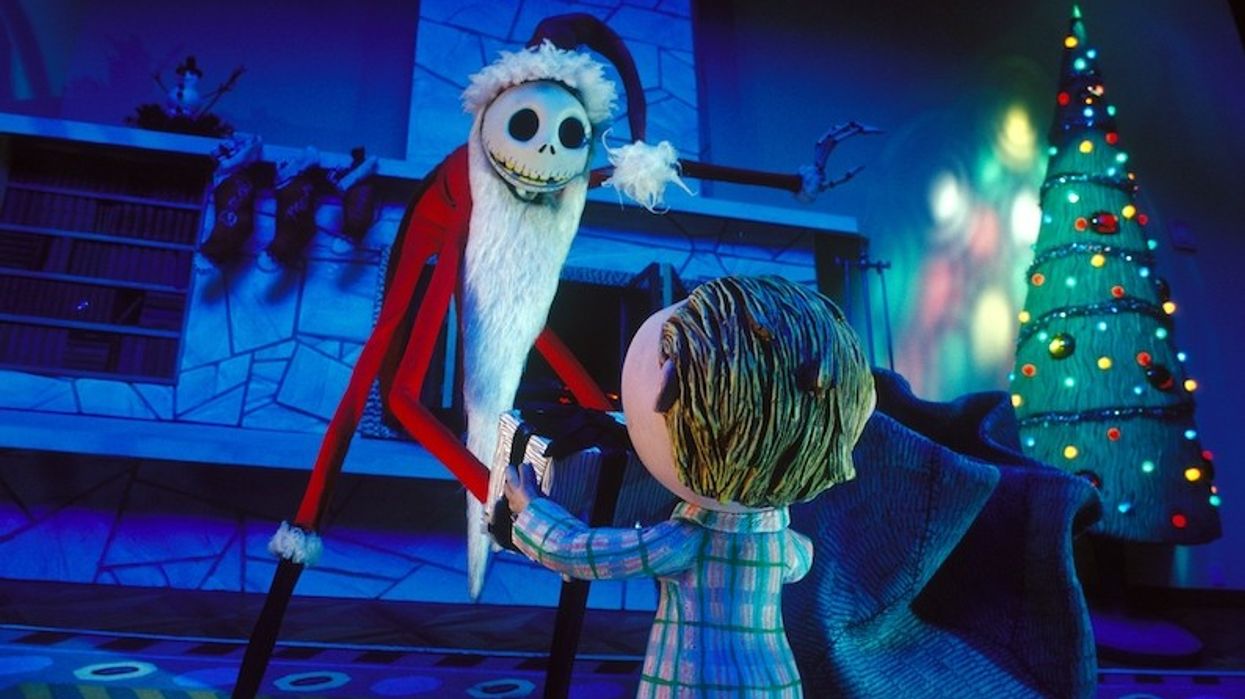What Are Some Storytelling Lessons from Popular Christmas Movies?
And which movies do you go back to over and over for their cinematic qualities?

The Nightmare Before Christmas
We're in the thick of the holiday season, and if you're like me, you're binge-watching popular holiday movies to pass the time.
I grew up on classic Christmas movies, and now that I'm writing professionally, I often turn back to them for lessons. I think many of them are written in a way to provide mass appeal and, therefore, are loaded with lessons on how to connect, how to keep people interested, and usually how to make people happy.
The allure of these stories lies not just in their seasonal setting but in the timeless themes they explore and the emotional chords they strike.
In this article, we unwrap the screenwriting secrets behind the success of Christmas movies, offering insights that can turn a simple script into a holiday classic.
Let's dive in.
Celebrate The Greatest Christmas Movies - Best Movie Montagewww.youtube.com
What Are Some Storytelling Lessons from Popular Christmas Movies?

It's a Wonderful Life
Paramount Pictures
Christmas and holiday movies are a staple of the holiday season, providing not just entertainment but also a set of screenwriting lessons for those looking to capture that festive magic.
I figured we should assemble a list with some examples and go from there.
- The Importance of Character Development:
- Example: In It's a Wonderful Life, George Bailey experiences a journey of self-discovery, learning to appreciate his life and impact on his community. This character evolution is central to the movie's enduring appeal. And his arc is one that continues to connect with generation after generation.
- The Power of Nostalgia:
- Example: A Christmas Story taps into a nostalgic view of childhood Christmases. The film's setting and events evoke a sense of nostalgia, connecting viewers to their own past holiday experiences. But through that nostalgia, not only can you connect, but also
- Universal Themes:
- Example: Love Actually explores themes of love, loss, and connection, resonating across different ages and cultures. Its exploration of universal emotions makes it relatable to a wide audience. And it has a really great screenplay that puts characters in situations so you know the stakes all the way.
- Conflict and Resolution:
- Example: In The Family Stone, the conflict is primarily relational, centering on family dynamics and acceptance. The resolution, which involves understanding and reconciliation, highlights the power of familial bonds. Holiday movies are so concentrated on families, this shows how you can squeeze a lot of drama out of one.
- The Magic of Setting:
- Example: The Polar Express uses its magical train journey to the North Pole to create a wondrous and enchanting setting that captivates the audience, enhancing the story's sense of adventure and magic. It also gives a lot of worldbuilding to create something that feels as magical as the story, and expands on the book.
- Balancing Humor and Seriousness:
- Example: Elf combines lighthearted humor with a heartfelt story about belonging and family. This blend of comedy and emotional depth makes the story both entertaining and touching. It's a masterclass in comedy storytelling.
- The Importance of Hope:
- Example: You want the audience to root for something, and believe in the magic of the story you're telling. Miracle on 34th Street focuses on the theme of belief and hope, especially in the face of skepticism. The movie inspires viewers to maintain hope and faith in the goodness of people and the magic of Christmas.
- Simplicity and Clarity:
- Example: Home Alone has a simple plot—a young boy defends his home from burglars—but it's the clarity of this storyline, combined with the universal theme of courage and resourcefulness, that makes it memorable and engaging. We see the character arc of Kevin from a scared kid who is helpless to someone who takes down the criminals and saves Christmas for his family.
Tropes and Cliches from Christmas Movies

Behind the Scenes of Elf and the Use of Forced Perspective
Warner Bros.
Tropes and clichés are part of what makes Christmas movies so relatable and enduring. A skilled screenwriter knows how to use these elements to their advantage, providing familiarity while also offering a new twist.
If you want to swing an original take on these kinds of ideas, here are some tropes you can subvert or lean into to build your story.
- The female lead is often a journalist, writer, or blogger living in an improbably stylish apartment in a major city.
- Voice-overs are commonly used to set the tone of the film.
- Royals or exaggerated characters from made-up European countries are frequently featured.
- The main characters often start out disliking each other, only to fall in love by the end.
- An elaborate scheme, often involving pretending to be in a relationship, is a go-to plot device.
- There's usually an "inappropriate" character for comic relief.
- The protagonist typically has a single, ever-available best friend.
- Bosses in Christmas movies are often depicted in bizarre, unrealistic ways.
- Characters bond over peculiar, highly specific interests or traits.
- A meaningful message about life and love usually forms the core of the film's resolution.
These lessons provide a blueprint for screenwriters looking to craft a Christmas movie that resonates with audiences by blending familiar tropes with fresh takes on the holiday spirit.
As you draft your holiday screenplay, remember these lessons, and perhaps you'll craft a screenplay that will be passed down through generations, much like the beloved Christmas classics we return to year after year.
Happy holidays—now get back to writing.











